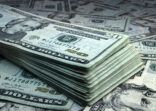In today’s data snapshot, FSA looked at flows into and out of Hong Kong-domiciled China mutual funds. In particular, we were interested to find out whether there is a difference between flows into best- and worst-performing mutual funds around times of high market volatility, and what it says about investor behaviour.
From the universe of Hong Kong-domiciled China equity mutual funds, excluding passively managed exchange-traded funds, we selected three best performers and three worst performers, based on their 3-year returns to 15 March 2017.
They are:
| Fund Name | Fund Size (million US$, 15 March 2017) | 3-year return, annualised |
| Schroder China Equity Alpha | 112.9 | 20.12% |
| Hang Seng China B Share Focus | 6.3 | 18.48% |
| Hang Seng China A Share Focus | 40.2 | 15.89% |
| BOCIP China Value | 239.0 | 0.0% |
| BOCHK China Golden Dragon | 185.4 | -3.81% |
| BEA Union Investment China Phoenix | 19.8 | -5.10% |
Data: FE
The chart below shows the three-year performance of the six funds compared to the CSI300 China equity index.
The events to keep in mind are the domestic stock market crash that began to be evident in mid-June 2015 and China’s surprise devaluation of the RMB in August 2015, both of which roiled global markets.
While the Hang Seng China A Share Focus Fund rallied together with the market in the first half of 2015, and Schroder China Equity Alpha followed closely, Hang Seng China B Share Focus Fund lagged behind.
The three worst performers did not rally as high. All funds dropped when the domestic market crashed and then again when China revalued its currency in August.

Fund flows tell an interesting story (see charts below).
The best performing funds experienced large outflows starting in December 2014, consistently through August 2015, as investors took profits. The outflows peaked in May and June 2015.

Data: Morningstar
The three worst performers, on the other hand, experienced inflows during the same period, peaking in June 2015.
We think one probable explanation is that investors were buying underperforming funds in expectation that they will catch up with the market.

Data: Morningstar
















